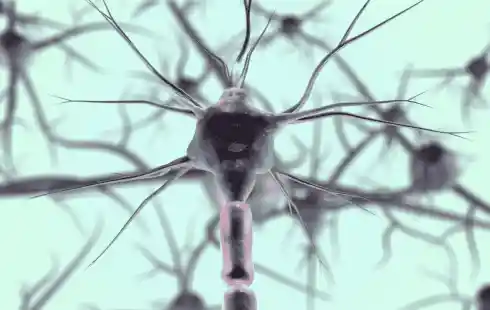
Pantone's Color of the Year an Endless Neutral Loop
Section: Fashion
 Multiple Sclerosis (MS) remains an enigmatic neurological condition, affecting millions worldwide with its unpredictable course and debilitating symptoms. Yet, recent advances in medical research have sparked hope for early detection and intervention strategies that could potentially halt the progression of MS before it manifests clinically. This article delves into the quest to detect suspicious traces in the blood, aiming to identify individuals at risk of MS and intervene proactively to mitigate its impact.
Multiple Sclerosis (MS) remains an enigmatic neurological condition, affecting millions worldwide with its unpredictable course and debilitating symptoms. Yet, recent advances in medical research have sparked hope for early detection and intervention strategies that could potentially halt the progression of MS before it manifests clinically. This article delves into the quest to detect suspicious traces in the blood, aiming to identify individuals at risk of MS and intervene proactively to mitigate its impact.
Multiple Sclerosis is a chronic autoimmune disease of the central nervous system, characterized by inflammation, demyelination, and neurodegeneration. Its etiology remains elusive, with both genetic predisposition and environmental factors implicated in its pathogenesis. MS typically manifests between the ages of 20 and 40, often striking individuals in the prime of their lives, and can lead to a wide array of symptoms, including fatigue, muscle weakness, vision impairment, and cognitive dysfunction.
Diagnosing MS traditionally relies on clinical manifestations coupled with magnetic resonance imaging (MRI) and cerebrospinal fluid analysis. However, these methods are limited in their ability to detect the disease at its earliest stages or predict its future course accurately. As a result, there is a pressing need for non-invasive, reliable biomarkers that can identify individuals at risk of developing MS before symptoms emerge.
Unraveling the Clues in Blood: Recent research has unearthed a plethora of potential biomarkers for MS, with a particular focus on blood-based assays. These biomarkers include genetic markers, such as specific human leukocyte antigen (HLA) alleles, as well as immunological markers, such as autoantibodies targeting myelin proteins. Furthermore, advancements in proteomics and metabolomics have revealed subtle alterations in blood composition associated with MS pathogenesis, offering valuable insights into disease mechanisms and potential diagnostic markers.
One biomarker that has garnered significant attention in recent years is neurofilament light chain (NfL), a protein released into the bloodstream following neuronal damage. Elevated levels of NfL have been observed in individuals with MS and have been correlated with disease activity and progression. Consequently, NfL has emerged as a promising candidate for early detection and monitoring of MS, offering a window into the underlying neurodegenerative processes.
Can MS Be Halted Before It Strikes? While the quest for early detection is crucial, the ultimate goal is to intervene preemptively to prevent the onset or progression of MS. Current therapeutic strategies primarily focus on modulating the immune system to reduce inflammation and prevent further damage to the central nervous system. However, emerging therapies targeting neuroprotection and remyelination hold promise for preserving neuronal integrity and function in individuals at risk of developing MS.
As our understanding of the molecular mechanisms underlying MS continues to evolve, so too does the potential for personalized approaches to prevention and treatment. By leveraging genomic, proteomic, and metabolomic data, clinicians may soon be able to tailor interventions to the specific biological profiles of individuals at risk of MS, maximizing efficacy while minimizing adverse effects.
Despite the optimism surrounding early detection and intervention in MS, significant challenges remain. Standardizing biomarker assays, integrating multi-omic data, and translating research findings into clinical practice are formidable tasks that require collaborative efforts across disciplines. Moreover, ethical considerations regarding predictive testing and the long-term implications of early intervention must be carefully navigated.
The journey to detect and prevent Multiple Sclerosis before it takes its toll on individuals and society is fraught with challenges, but the strides made in biomarker research and therapeutic innovation offer hope for a brighter future. By unraveling the suspicious traces in the blood and intervening proactively, we may one day stem the tide of this devastating disease, transforming the lives of millions worldwide.
Image by Lakshmiraman Oza from Pixabay

Section: Fashion

Section: News

Section: Fashion

Section: Arts

Section: Politics

Section: Health Insurance

Section: News

Section: News

Section: News

Section: Arts
Both private Health Insurance in Germany and public insurance, is often complicated to navigate, not to mention expensive. As an expat, you are required to navigate this landscape within weeks of arriving, so check our FAQ on PKV. For our guide on resources and access to agents who can give you a competitive quote, try our PKV Cost comparison tool.
Germany is famous for its medical expertise and extensive number of hospitals and clinics. See this comprehensive directory of hospitals and clinics across the country, complete with links to their websites, addresses, contact info, and specializations/services.
Join us for an enchanting Christmas adventure at the Münchner Marionettentheater! Experience the marionette play 'Der verschwundene Wunschzettel' by Siegfried Böhmke, featuring our beloved Kasperl Larifari and his little friend Stupsi. As Christmas approaches, both Kasperl and Stupsi have prepared...



No comments yet. Be the first to comment!